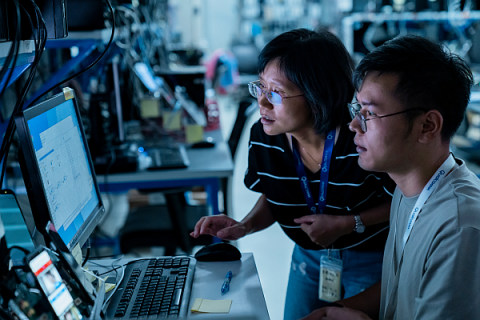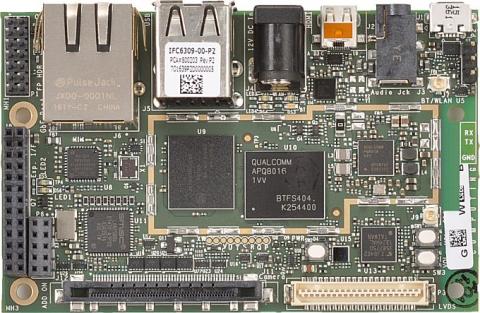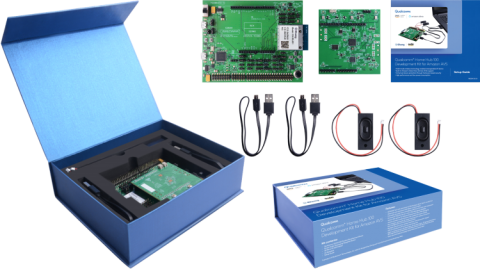Solutions Resources
Applying convolutional neural networks to computer vision
CNNs are useful in extracting features from images. The following pages describe the approaches and differentiators among the most common architectures used in computer vision.
Deep Learning and Convolutional Neural Networks for...
Running a DeepLab model for image segmentation on the mobile device
This article describes an Android application based on the machine learning capabilities of the Qualcomm® Neural Processing SDK for AI, deep learning software for Snapdragon® mobile platforms. The SDK is used to convert trained...
Procedure for training, converting and running a DeepLab model for image segmentation
Semantic segmentation involves applying a label, such as “tree,” “flower,” “grass” or “house,” to every pixel in an image. It is useful in applications like changing the background of an image. DeepLab-v3 is a...
Attaining deeper understanding of images for machine learning models
Some computer vision models can detect objects, determine their shape and predict the direction in which they will travel. For example, such models are at work in self-driving cars. Three important tasks undertaken by computer...
Tools for deeper, more efficient analysis of images
Image segmentation is the task of partitioning an image into multiple segments for easier analysis. Google’s DeepLab-v3 has led to a major improvement in object detection using machine learning. Its semantic segmentation is able to fetch more...
The lifecycle of traditional software is arguably quite straight forward. At its simplest, you develop, test, and deploy the software, and then release a new version with features, updates, and/or fixes as needed.
Effective healthcare systems rely on a variety of testing and diagnostic tools to detect illnesses and provide the best possible outcomes for patients.
The Qualcomm Robotics RB5 Development kit expands upon the 96Boards Cosumer Edition (CE) Specification.The development kit consists of QRB5165 SOM mounted on the robotics mainboard. Some key components of the QRB5165 SOM are described in the following table. Key SOM...
The Qualcomm® Robotics RB5 Development Kit is based on the Qualcomm Robotics RB5 Platform that facilitates accelerated development of innovative, power-efficient, high computing robots and drones for enterprise, industrial, and professional service applications. At the heart of the...
Introduction
Welcome to the Qualcomm Robotics RB5 Development Kit Getting Started Guide. This guide provides the minimal information a developer needs to get started with the Qualcomm Robotics RB5 development kit.
The goal of this getting started guide is to:
Provide an overview of the...
You’ve probably noticed on Qualcomm Developer Network (QDN) that we offer dozens of tools and technical resources.
Purchase from Okdo Product Brief
The Qualcomm® Home Hub 100 Development Kit is designed for building your voice-controlled products around Amazon Alexa Voice Services. The kit puts you on the path to building the same kind of voice control into your devices that is at work in the Amazon...
Tools included in Qualcomm Neural Processing SDK
Besides prediction accuracy, two other important aspects of creating a model are low inference time and low memory consumption. Tools in the Qualcomm® Neural Processing SDK™ are designed to help developers and machine learning engineers analyze and...
Testing the app on the mobile device
The previous part of this pipeline covered using the TensorFlow low-level API and supported layers from the Qualcomm® Neural Processing SDK for AI to train a facial expression recognition model. Then it covered how to convert the model to the deep learning...
Pre-processing the data set, training the model and running inference on the desktop
Multiple techniques have been proposed for facial expression recognition (FER), technology designed to identify facial expressions like anger, disgust, fear, happiness, sadness, surprise and no emotion (neutral...
Using a CNN to detect facial keypoints and use them in applications with face filters
Face filters, which overlay facial photographs with funny objects, have become commonplace. They are used extensively in social media applications. The technique behind this filter application is facial...
Test scenarios and test cases for an ML model and app to detect drowsiness
Drowsiness and its effects on driving form the context for this series of test scenarios and test cases. The objective is to test a computer vision-based application that identifies drowsiness by monitoring changes in...
Using computer vision and AI to recognize facial expressions and enhance vehicle safety
The combination of computer vision and AI is a powerful tool in detecting a person’s state of mind through facial expressions. It is especially useful in an automotive scenario where it can assist or alert...
Code samples and explanations for detecting facial expressions
Detecting and localizing human faces paves the way for facial expression recognition (FER), which has many applications ranging from entertainment (face filters) to driver safety (emotion analysis).
With the Qualcomm® Neural...





